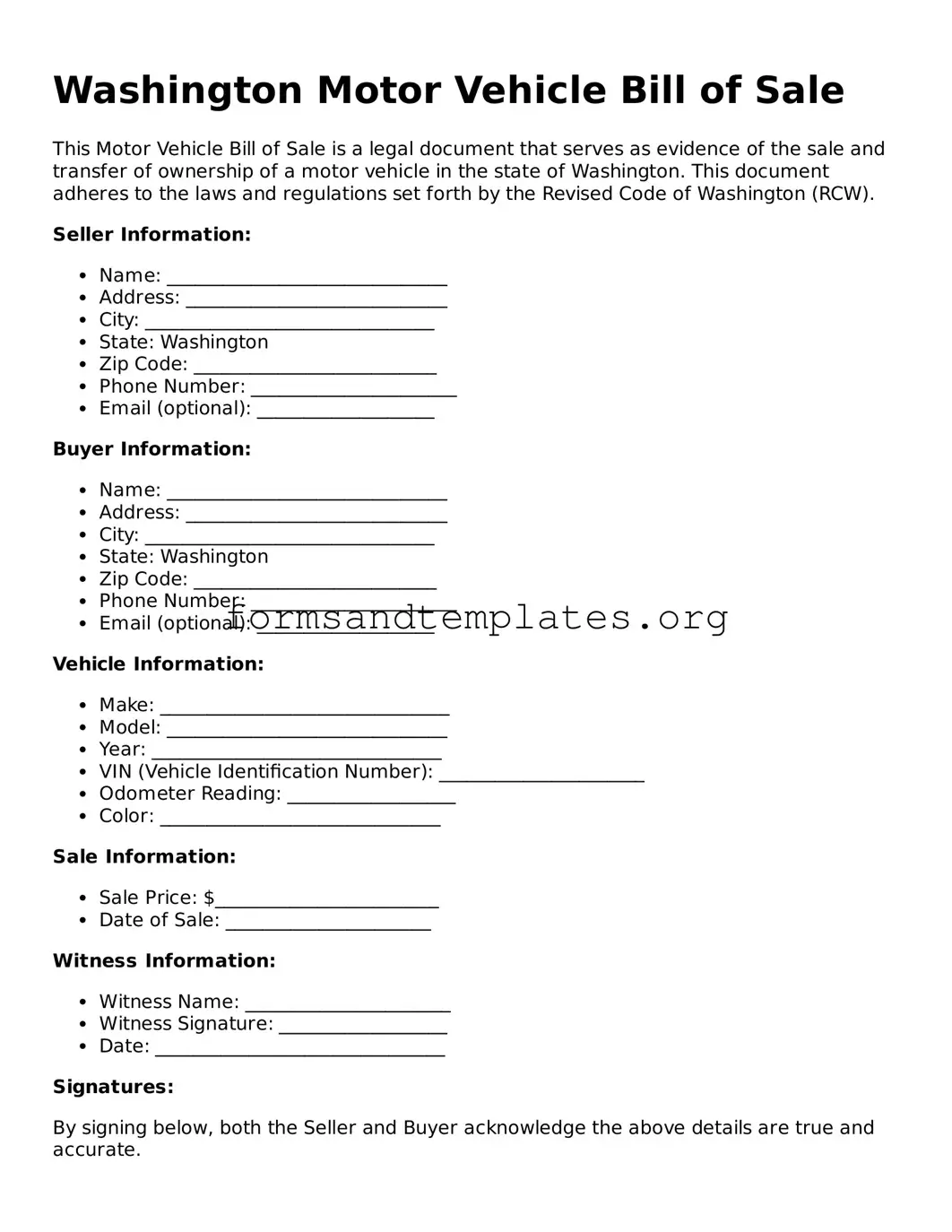What is a Washington Motor Vehicle Bill of Sale?
The Washington Motor Vehicle Bill of Sale is a legal document that records the transfer of ownership of a vehicle from one party to another. This form provides essential details about the transaction, including the vehicle's identification number (VIN), make, model, year, and the purchase price. It serves as proof of the sale and can be useful for both the buyer and seller for future reference.
Is a Bill of Sale required in Washington State?
While a Bill of Sale is not legally required for all vehicle transactions in Washington, it is highly recommended. Having this document can protect both the buyer and the seller by providing a clear record of the transaction. Additionally, it may be necessary when registering the vehicle with the Department of Licensing (DOL) or if any disputes arise regarding the sale.
When filling out the Bill of Sale, ensure that the following information is included:
-
Full names and addresses of both the buyer and seller
-
Vehicle details, including make, model, year, color, and VIN
-
Purchase price of the vehicle
-
Date of the sale
-
Signatures of both parties
Including this information helps to avoid any misunderstandings and provides a clear record of the transaction.
Can I create my own Bill of Sale?
Yes, you can create your own Bill of Sale as long as it includes all the necessary information. However, using a standardized form can simplify the process and ensure that you don't miss any important details. The Washington Department of Licensing provides a template that you can use, which is recommended for clarity and compliance.
Do I need to have the Bill of Sale notarized?
No, notarization is not required for a Bill of Sale in Washington State. However, having it notarized can add an extra layer of legitimacy to the document, especially in cases where there may be disputes in the future. It can also provide peace of mind for both parties involved in the transaction.
How do I use the Bill of Sale for vehicle registration?
To register the vehicle using the Bill of Sale, the buyer must take the completed form to the Department of Licensing. Along with the Bill of Sale, the buyer should bring the vehicle title, proof of identity, and any applicable fees. The DOL will use the Bill of Sale as proof of ownership transfer when issuing a new title in the buyer's name.
What if I lose my Bill of Sale?
If you lose your Bill of Sale, it can be challenging to prove the transaction took place. It's advisable to keep a copy of the document in a safe place. If you cannot locate it, consider contacting the seller to request a duplicate. Alternatively, you may need to provide other evidence of the transaction, such as bank statements or emails, if disputes arise.
Can I use the Bill of Sale for a gift vehicle?
Yes, you can use a Bill of Sale for a vehicle that is being gifted. In this case, the form should clearly indicate that the vehicle is being transferred as a gift and may include a statement that no money is being exchanged. Even though the transaction does not involve a purchase price, having a Bill of Sale is still beneficial for documentation purposes.
